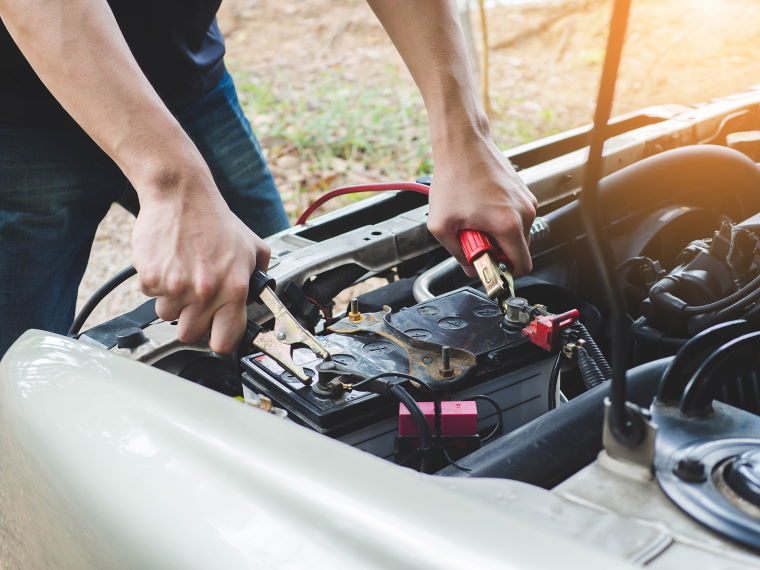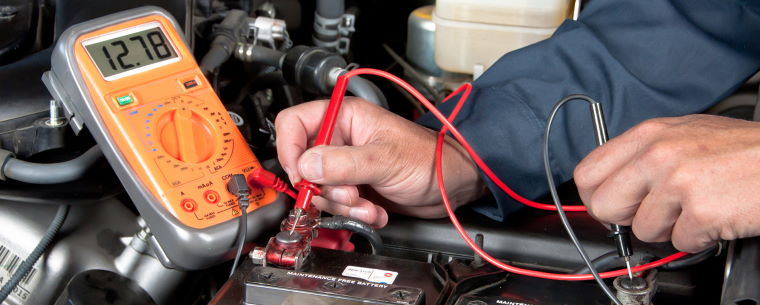How to Check the Health of Your Car Battery
![]() Published on: Friday, 23rd July 2021 |
Published on: Friday, 23rd July 2021 | ![]() Author: Bradley Jando
Author: Bradley Jando
Car batteries are a small but vital part of a car. It’s not just the radio and air con that they power, but they directly power the starter motor to get your engine running. If you’ve ever seen those old films where someone has to crank start a car from the front, this is what your starter motor does! But without a good, healthy battery, your starter motor (and therefore car) is a pretty piece of metal.
So how do you make sure that your car battery stays in good health?
Checking the battery voltage
Car batteries are 12v (DC) batteries. But that doesn’t mean that they’re always at 12v or that 12v means the battery’s full.
An AGM (acid gel mat) battery – the type that’s most frequently used in today’s cars – will usually read a voltage of around 12.9v when it’s full, but it’s not as simple as waiting until it reaches 12.9v while the car is running to turn it off again. That’s because, as a simplified rule of thumb, power flows from higher-voltage starting points to lower voltage parts – so when it comes to charging a car battery, the alternator is usually providing a much higher voltage. This can often be as high as 14.4v.
So you need to have your car turned off when testing the battery voltage and use a good voltage measuring device – we’d recommend a multimeter as they’re relatively affordable and useful tools to have around.
In order to use a multimeter, you need to select the reading to read DC voltage – this will usually either directly state “DC Voltage” or have a V with a dots and lines symbol. The wave symbol is for AC (because it’s alternating current) and the dots and lines symbol is for DC.
Next, you need to put the red lead (positive) and the black lead (negative) on the right battery terminals. If you’ve selected the right read mode on your multimeter then nothing bad will happen if you put the leads on in the wrong polarity, but you’ll see a minus sign in front of your reading.
The positive terminal is usually shielded by a rubber or plastic casing – but if your battery doesn’t have this then you can usually look closely at your battery, and the terminals will be marked with a + or – to indicate their polarity.
A battery will usually be able to start a car if it’s above 11.8v.
What to do if my battery is below 11.8v

You usually have two options to start your car when your battery is below 11.8v.
The first is to jump start the car using another car or a dedicated jump start unit. Jump starting from another car will usually provide the power to start the car from another car’s battery so that your own car’s alternator can top the battery up once it’s started.
The other option is to trickle charge your battery using a good quality car battery charger. You tend to have to leave these attached for 8-12 hours so that it can slowly charge to an optimum point.
You should be careful to not let your battery go flat too frequently. Every time a lead acid battery gets near empty, it gets damaged a little and can’t hold as much charge.
How soon does a battery get topped up?
Your car’s alternator is essentially a generator that’s attached to the engine. How soon it’s able to recharge your battery depends on a number of factors like how much power your car’s systems are using while it’s on (such as having full headlights on, heaters, radio, and so on). A healthy battery can be topped up to full in as few as 10 seconds after a single startup, but it’s usually a good idea to let it charge for at least a minute.
If you know that you’re going to leave your car unused for a while, you should still periodically turn it on to charge the battery.
What if I’ve charged my battery and it goes flat quickly?
If you jump started your car or otherwise trickle charged it to a suitable voltage and managed to start your car the first time, only to have the battery go flat a few minutes into a drive, then you most likely have a faulty alternator.
If you’re having battery trouble then you should head to your nearest Tyre Pros centre for a battery health check.

